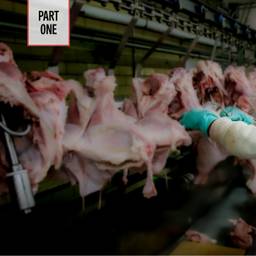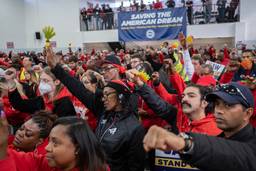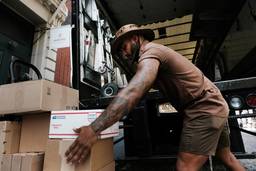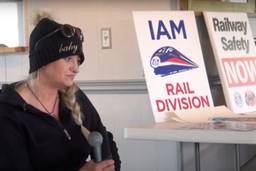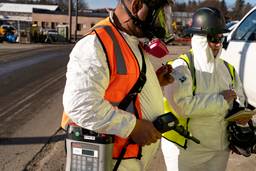With Few Workplace Safety Protections, Latino Worker Deaths Are Surging
The statistics are sobering, and it’s likely we’re still undercounting: Only one-fourth of injuries suffered by Latino workers on small construction jobs are regularly reported, one study found.
Stephen Franklin
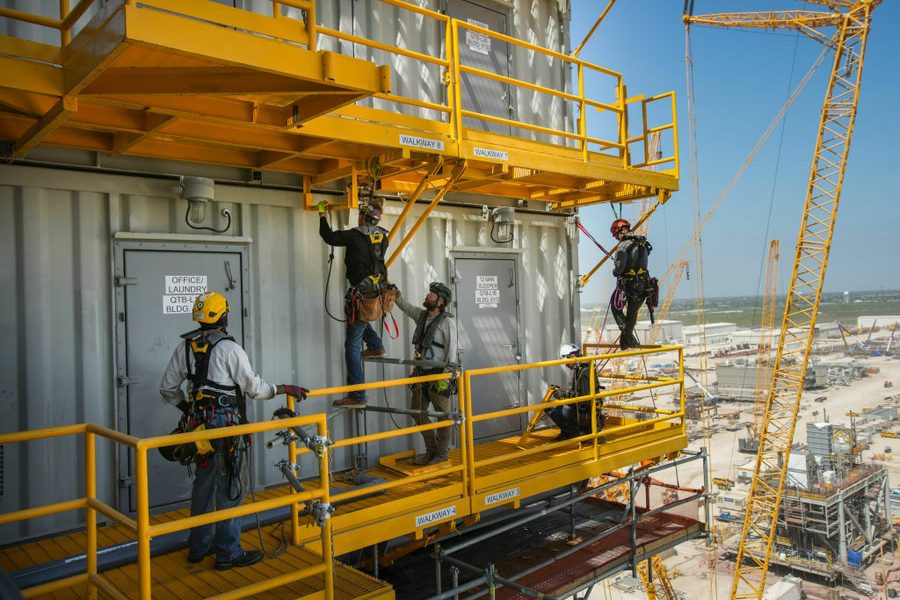
A burst of shouts cascades as three men plunge downward. Other workers reach for them as the scaffold plummets.
But no one can grab hold of them.
Thinking he can still save them, a middle-aged construction worker scampers to aid the three men, one a long-time friend, he had helped get hired on the site.
“I saw everything,” he says and then repeats himself. “I saw everything. In a video you can see me removing planks from them because I thought they were alive, but they were dead.”
Jose Canaca, 26, Gilberto Monico Fernández, 54, and Jesus “Chuy” Olivares, 43, had been putting up an outer brick wall for a 17-story apartment building in a popular neighborhood in Charlotte, N.C., when they fell from the 10th floor. They hit a patio rooftop on the fourth floor — a 70-foot drop.
Months after the fatal construction accident in January 2023, the tragedy haunts him. He quit the risky construction work he’d done for about 15 years and has been taking lower-paying jobs.
“I don’t wish this on anyone, what happened there,” says Diego Sanchez, the construction worker who tried to rescue the three men. Sanchez, who came to the United States from Honduras, asked to use a pseudonym because he fears retaliation from immigration authorities.
The deaths of Canaca, Fernández and Olivares added to the increasing numbers of Latino workers killed on the job, a death count that has grown steadily year after year. Latino workers today have the highest workplace fatality rate: The number of on-the-job deaths has declined over time for white people, and slightly increased for Black people over the past few years, but fatalities for Latino workers continue to rise sharply.
While workplace safety is an issue that affects everyone, a disproportionate share of those who will be mourned this Workers Memorial Day — observed on April 28 to honor people injured or killed on the job — were Latino.
There were 1,248 Latino workers killed on the job in 2022, reflecting a 57% increase over the previous decade, according to the U.S. Bureau of Labor Statistics.
About two-thirds of those Latino workers killed on the job in 2022 were undocumented, and as the fatalities continue to rise, many are trying to understand what drives this death spiral.
Latino workers predominate in low-wage, risky jobs: in construction, meat processing, landscaping, farmwork and warehousing. They can die in many different ways, including collapsed ditches, falling off roofs, ladders and scaffolds, and because of machines that catch and mangle their bodies. Excessive heat can be overwhelming, especially as water and rest breaks on construction sites or farm fields are often policed or prohibited.
After investigating the scaffold collapse, the North Carolina Department of Labor’s Occupational Safety and Health Division fined two companies involved.
Friends Masonry Construction was fined for failing to inspect the equipment before the work, for not repairing or replacing damaged equipment and using equipment that was heavily rusted and deteriorated. The company was initially fined $43,506, but that was reduced to $29,004 (for an unspecified reason in the report).
Felipe Estrada Calzada, a company official, declined to discuss the incident.
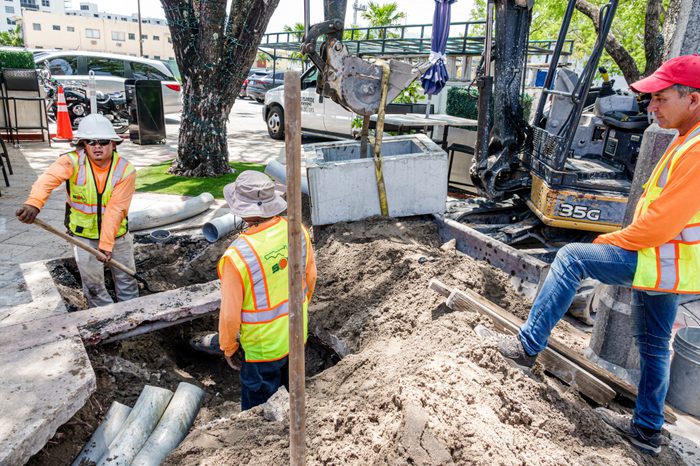
Old North State Masonry was fined for not inspecting the equipment, failing to re-test older equipment and relying on a scaffold that was incapable of bearing sufficient weight. It was fined $87,012. They did not respond to requests for comment.
“When we come to this country, we want to make money, so we get into sketchy situations,” says Sanchez, who worked for about 15 years in the South since coming to the United States. He has worked at places where they asked for papers and where they didn’t. And that has meant taking jobs where he can slip by. “When we try to work with [white] Americans, there, they ask for a good Social Security card, and if we don’t have one, we die of hunger,” he says.
So, too, some are teens working in dangerous jobs, like Duvan Tomas Perez, a 16-year-old from a rural Guatemalan village, who died last July, while working on the regular cleaning crew in a Mar-Jac Poultry plant in Hattiesburg, Miss. U.S. law bars youths under 18 years old from working in hazardous workplaces.
The teen was reportedly using the Social Security information of a 32-year-old. Attorney Jim Reeves of Biloxi, Miss., who has filed a lawsuit against Mar-Jac and Ōnin Staffing on behalf of the youth’s family, finds it hard to believe that the company accepted the fraudulent information. “My client looked like a 12-year-old,” he says.
Mar-Jac officials did not respond to requests for comment, but the company issued a statement in July 2023, explaining that it uses “staffing companies” to hire workers due to “an unprecedentedly tight labor market” and relies on them to verify that their hiring is legal.
Adding that the boy’s “age and identity were misrepresented on the paperwork,” the company explained in a statement that “we are devastated at the loss of life and deeply regret that an underage individual was hired without our knowledge.”
Ōnin Staffing did not respond to requests for comment.
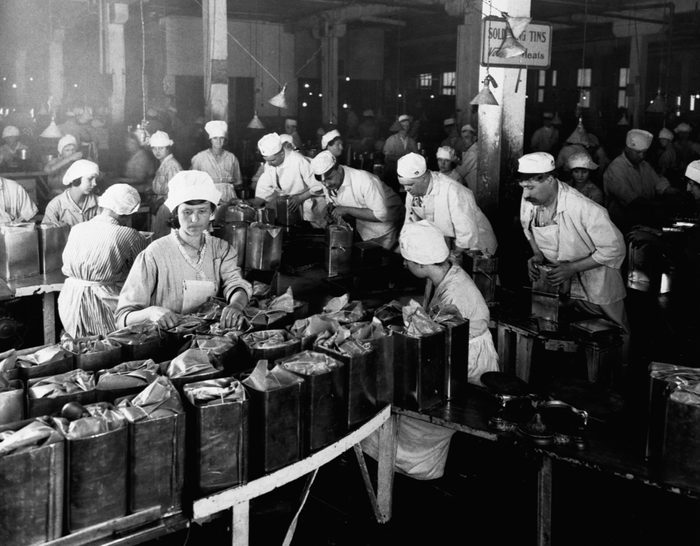
Pointing out that the latest incident was their second involvement with the Mississippi plant in recent years, OSHA officials in January fined Mar-Jac Poultry $212,646, and cited 14 serious safety violations at the Hattiesburg facility. It also pointed to a 2021 incident at the plant when a worker was killed in an accident and the company was fined. “It was the same violation in each of these cases,” says Reeves.
The company has had other worker safety and hiring problems with the government.
A couple were convicted by a federal jury in Alabama in 2021 for illegally transporting undocumented migrants, including minors, to a Mar-Jac facility in Alabama. And in 2009, the company was fined $380,000 for not having certain safety procedures or performing compliance audits for several years at a plant in Gainesville, Ga.
The death of Perez, the teen who died while working for Mar-Jac, reflects a larger problem.
As a New York Times investigation in February 2023 showed, many migrant youths are snarled in such life-threatening jobs. At about the same time, the U.S. Department of Labor said it was concerned about an increase in child labor and pointed to unaccompanied migrant youths from Latin America. In July 2023, the agency followed up, saying it had concluded 765 child labor cases involving 4,474 children.
At the peak of the Covid crisis three years ago, the United Food and Commercial Workers union complained that thousands of meatpacking workers, most of whom were Latino, were falling sick at facilities because they lacked protections against the virus.
From his previous work with day laborers in Charlotte, Isael Mejia, an Iron Workers union organizer in Charlotte, N.C., recalls workers describing their job safety as a cruel joke.
“You are getting picked up at a Home Depot. You have no experience in roofing, and then you fall and then what’s the easiest thing [for whoever hired you] to do, is to leave you there,” he says.
Finding solutions is made difficult by the fact that government figures apparently do not capture all the workplace dangers Latino workers face. Only one-fourth of the injuries suffered by Latinos working on small construction jobs are regularly reported, according to a 2011 study based on long-term statistics.
Much of the surge in deaths and injuries for Latino workers’ has taken place in the construction industry. More than 34% of construction workers were Hispanic in 2022, up from 9% in 1995.
“Hispanics are now more than one-third of the construction workforce and an even bigger share of workers in high-risk trades like roofers and laborers,” says Chris Trahan Cain, director of the Center for Construction Research and Training (CPWR). Latino workers are more likely to work for small companies which have higher fatality rates, he adds.
The CPWR is a Washington D.C.-area nonprofit that focuses on ways to reduce workplace injuries and fatalities. There were more deaths in construction in 2022 than in any other industry, emphasizing the importance of such work.
Deaths among Latino construction workers jumped from 222 in 2012 to 408 in 2022, accounting for more than 32% of all workplace deaths among Latino people in the nation.
In 2017, the fatality rate for Latino construction workers who died in falls was 50% higher than for others.
Just as Latino workers disproportionately die on construction jobs, they suffer from high injury rates.
The fatality rate for Latino construction workers was 41.6% higher than others in 2020, and the fatality rate for Latino construction workers increased 46.5% from 2018 to 2020 (8.6 to 12.6), while the rate decreased 6.3% for non-Hispanic workers.
Driving these numbers, say safety experts, researchers and the workers themselves, are a slew of forces.
Overall, Latino workers tend to be younger and less experienced, lack training in the job, earn lower wages and work for small outfits, researchers say. They often take jobs in sectors that others avoid. For example, Latino workers make up 55.5% of the nation’s roofers, which had the highest fatality rate in the construction industry in 2020. And in 2022, 54% of roofers’ deaths were Latino.
Texas is one of the most lethal states for Latino workers and recorded 269 deaths in 2022, up from 211 in 2016. Latino people make up 40% of the state’s population, but they accounted for 47% of workers killed on the job in 2022.
These facts should not be surprising since Latino workers have long suffered on-the-job setbacks in Texas, according to news reports, experts and worker advocacy groups.
Texas does not require private employers to have workers’ compensation insurance, and many Latino workers lack health insurance, worker advocates say. So, too, conservative-led politics in Texas have resulted in legislative efforts that often flaunt worker safety issues.
And the latest example of ignoring pleas to protect workers is Gov. Greg Abbott’s signing of H.B. 2127 last June barring communities from setting their own heat regulations, an effort that included wiping out water breaks for construction workers in Dallas and Austin.
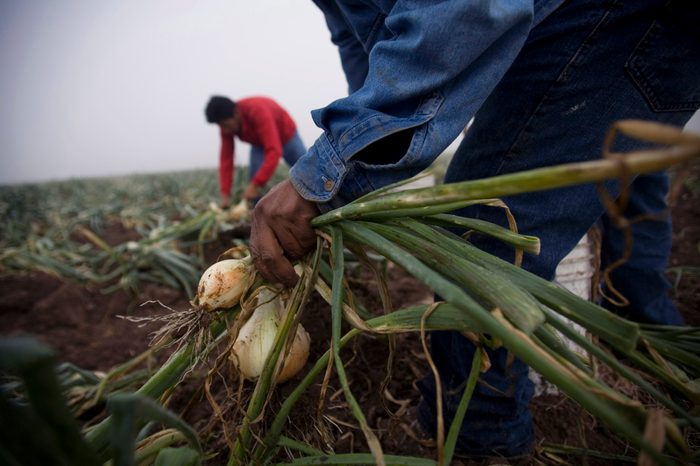
Tagged as the “Death Star” law by unions, human rights and worker advocacy groups, the bill is currently snarled in a challenge by the state in the Texas courts. Meanwhile, the law has been implemented.
“The Death Star law is the largest transfer of power away from working people and into the hands of a few extreme state lawmakers,” said an official from the Texas AFL-CIO in August. Unions account for 4.5% of Texas’ workers.
Gov. Abbott’s office did not reply to requests for comments. But insight on the law’s support comes from the Texas Public Policy Foundation, a politically influential conservative group that strongly promoted its passage.
“The fight over HB 2127 isn’t about water breaks, no matter what the media says. It’s about progressive power and preventing the California-zation of Texas’ local governments,” wrote a staff writer for the foundation in July 2023.
“It comes as no surprise that the state of Texas continues to be the most dangerous for workers and that Latinos are especially vulnerable to unsafe work environments in hard labor industries such as construction,” says Christine Bolaños, an official with the Worker Defense Project. Her organization is a leading voice for low-wage immigrant workers in Texas.
“From heat-related deaths to serious negligence that can lead to equipment malfunctioning and on-the-job accidents and to wage theft and workplace discrimination,” she adds, “Latinos have much stacked against them including language barriers, sometimes a lack of proper legal documentation and a familial obligation to continue working in harsh conditions to keep food on the table and a roof over their head.”
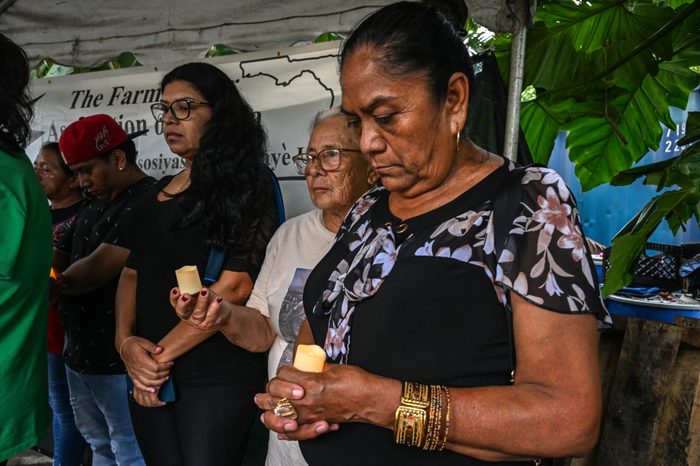
Protecting Latino workers has been a major goal for the New York Committee for Occupational Safety and Health, an organization of workers, unions, workers advocates and health-and-safety professionals.
But one of the obstacles to saving Latino workers’ lives, says its executive director, Charlene Obernauer, is that workers do not know their rights. Or they’re warned by employers who tell them, ‘If you say anything we are going to call ICE [Immigration and Customs Enforcement],’ she explains.
A major boost for undocumented workers came when the Biden Administration announced in 2023 a process aimed at protecting noncitizen workers who report labor violations from immigration-based retaliation. The effort is called deferred action for labor enforcement because it allows workers to delay deportation and obtain work permits to assert their legal rights.
“By and large, workers are not being informed” that this process exists though, says Obernauer.
After the scaffold collapse in Charlotte, labor and human rights groups scrambled to help the families impacted understand their legal options.
Carol Brooke, an attorney with the North Carolina Justice Center says many workers would not discuss the accident, fearful that their undocumented status would come up, triggering actions against them by immigration officials.
Mejia, the Iron Workers union organizer, says he knows very well the dangers Latino workers face because of his union work, experience helping day laborers in Charlotte and ties to the Latino community.
And often exploitation defines the world that Latino workers tell him about.
It is a world, he says, where you work tired or injured because you need money, where you often don’t get paid or don’t speak up because you fear the boss will alert immigration officials and where you not only don’t have safety training or supplies, but your bosses don’t seem to care about your safety.
It’s a world, he adds, where some doubt that they will survive.
“I talk to so many people, who don’t see a future,” he says. “They are like, ‘I’d be lucky if I see another year.’”
Abel Uribe contributed to this article.
A former labor writer for the Chicago Tribune, Stephen Franklin is a Pulitzer Prize finalist and an adjunct professor at the University of Illinois Urbana-Champaign School of Labor and Employment Relations.

